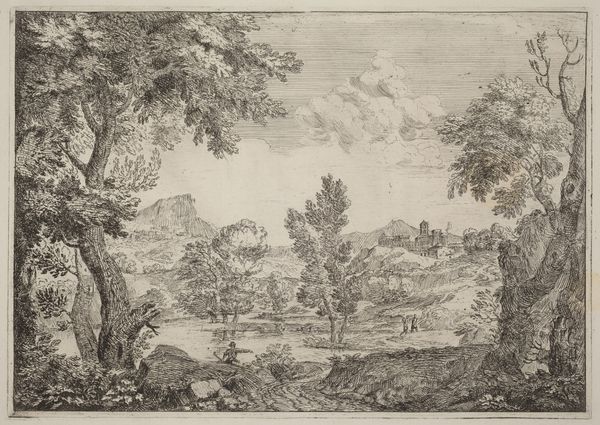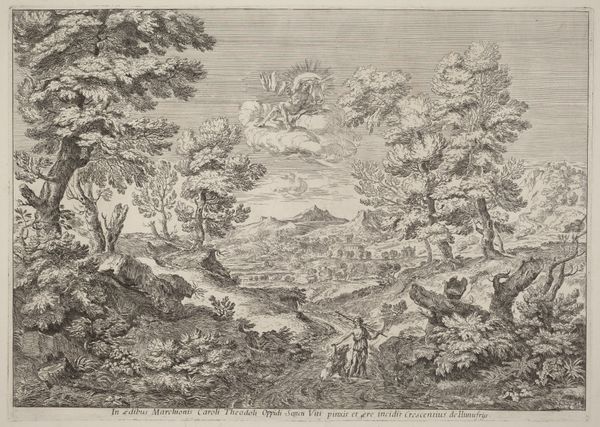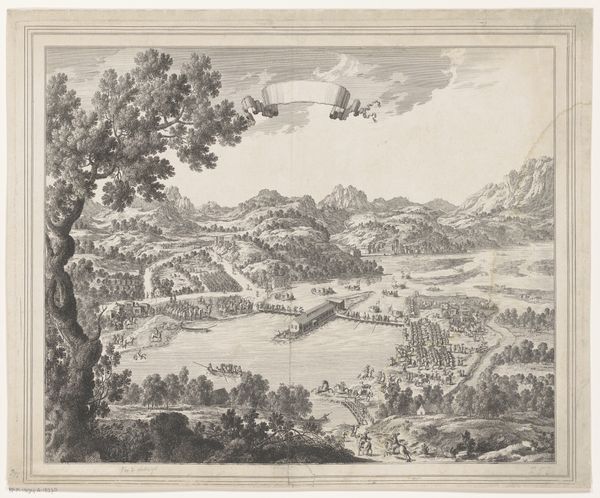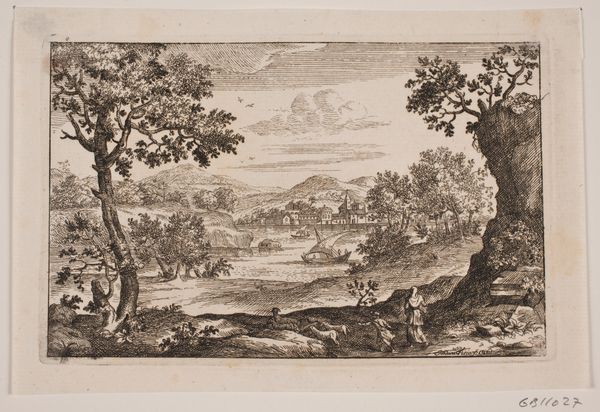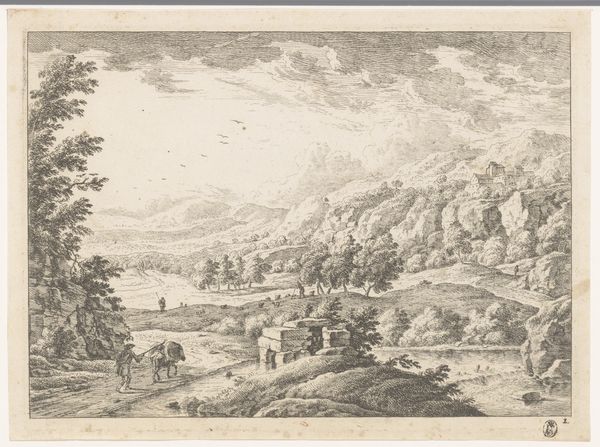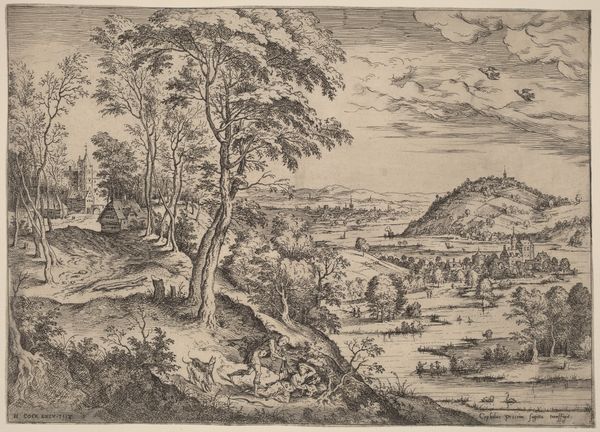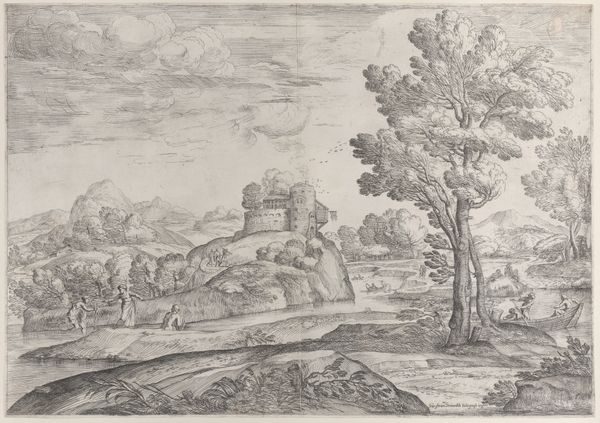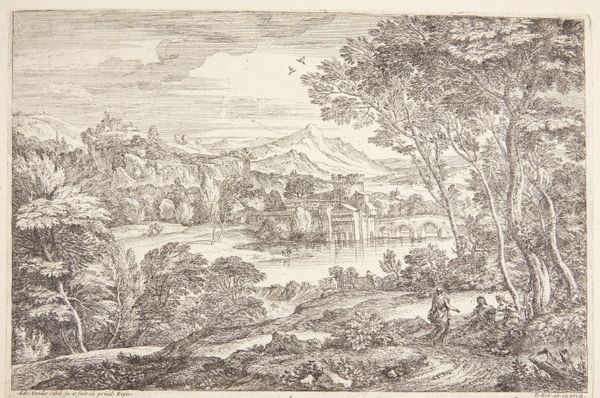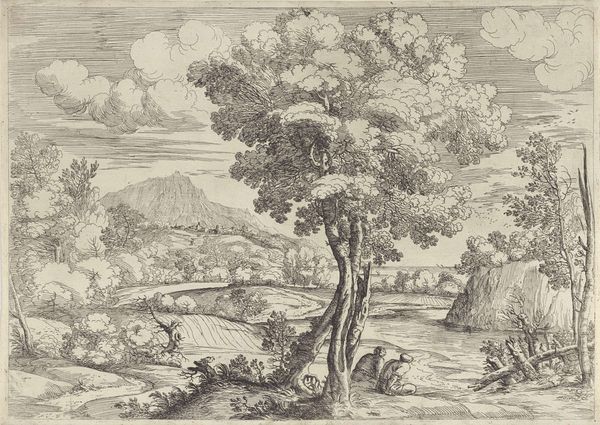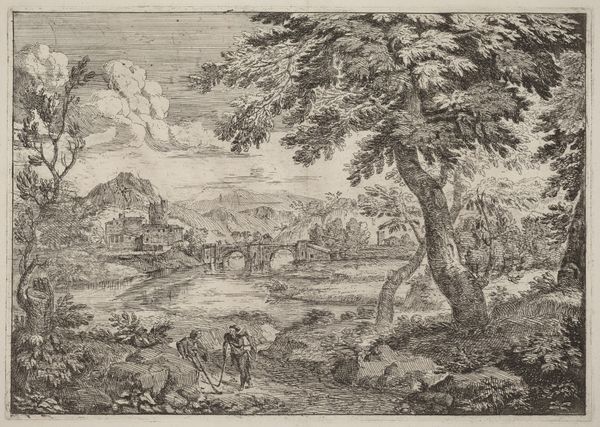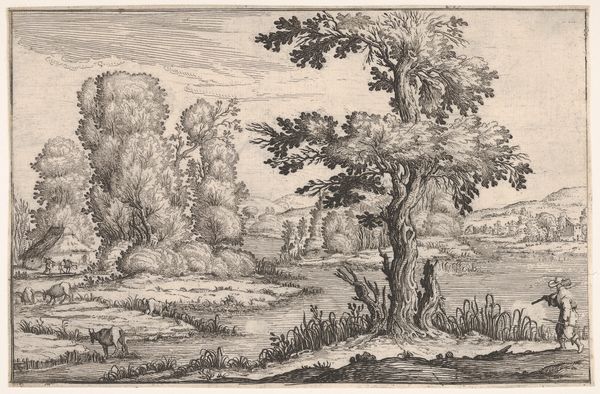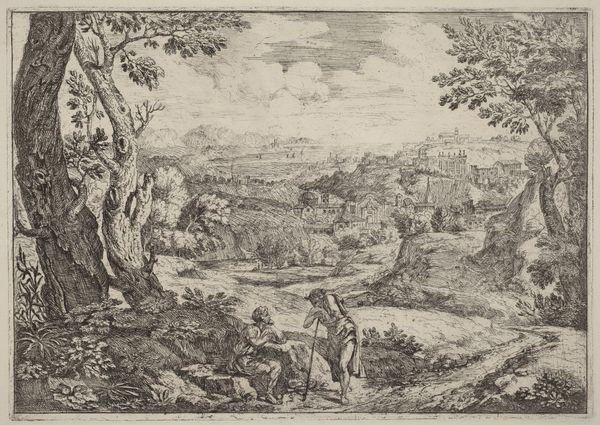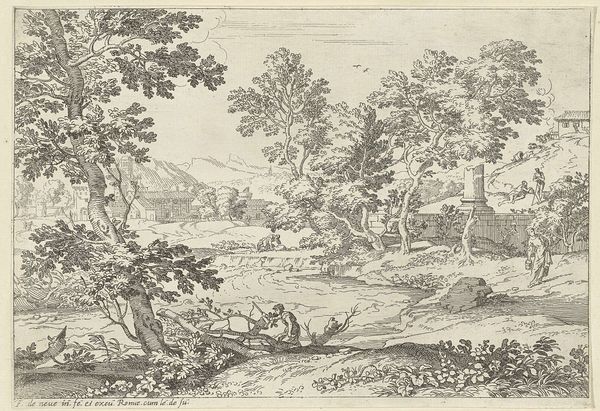
drawing, print, etching
#
drawing
#
ink drawing
#
baroque
# print
#
etching
#
landscape
Dimensions: plate: 22.5 x 31.5 cm (8 7/8 x 12 3/8 in.) sheet: 29.4 x 40.6 cm (11 9/16 x 16 in.)
Copyright: National Gallery of Art: CC0 1.0
Curator: Here we have "Houses Beside a Mountain," an etching crafted in 1696 by Crescenzio Onofri. Editor: The immediate feeling I get is of pastoral tranquility, a gentle blending of nature and human habitation. The details almost invite quiet contemplation. Curator: Absolutely. The choice of etching as a printmaking technique is critical. It allowed for a relative ease of reproduction while maintaining a detailed linework. It would allow an artist to profit in times before intellectual property as we understand it. Onofri was able to reproduce his own artwork or potentially that of another artist more widely. Editor: That's interesting! When you view the etching as reproducible for profit, it contextualizes artistic production in the seventeenth century very well. Thinking about accessibility, I consider who these images were available to: was it mainly wealthy landowners seeking idealized scenes of the countryside, for instance? These landscapes can embody an imposition of ownership. Curator: Certainly a valid point. In terms of production, consider the economic investment required for etching materials versus, say, charcoal on paper. A workshop equipped for etching signals a specific economic scale, so the ability to circulate art in such volume can contribute to a type of visual or even environmental control and modification of taste, where the taste will prefer etchings as the ultimate product in the visual culture. Editor: Right, and that speaks to broader cultural and economic forces. It begs the question: what does an idealized landscape mean when there's the implied labor and material consumption of production in these visual representations? And what isn’t present, specifically from an Indigenous or marginalized communities perspective. How does the representation of land ownership, absent any trace of contestation or historical tensions, propagate very specific ideologies? Curator: That intersection of labor, the idealized rural scene, and economic frameworks invites us to consider the social fabric, really, not just the artistic technique. Etching offered ways to reproduce and distribute those landscape scenes. Editor: Looking at it now through this perspective really gives you another lens in understanding the art and its place in history. Curator: It really makes you appreciate art and history hand in hand.
Comments
No comments
Be the first to comment and join the conversation on the ultimate creative platform.
